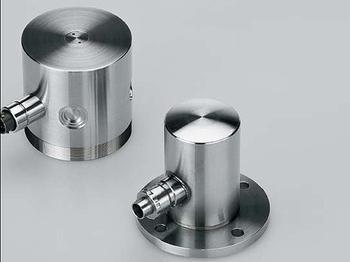 In recent years, the Internet of Things has become another trillion-level emerging industry in the global information and communication industry. China has also started a wave of intelligence, especially the rise of smart sensors, which is the key to the rapid development of the Internet of Things. How to develop the sensor in the future, it is inevitable to seize the intelligence and micro.
In recent years, the Internet of Things has become another trillion-level emerging industry in the global information and communication industry. China has also started a wave of intelligence, especially the rise of smart sensors, which is the key to the rapid development of the Internet of Things. How to develop the sensor in the future, it is inevitable to seize the intelligence and micro. With the advancement of Internet of Things technology, not only does the sensor require basic information collection and processing functions, but its high degree of intelligence has also become the basic basis for measuring its performance. However, with the global economic depression, Chen’s helplessness is greatly reduced. The emergence of miniaturized sensors undoubtedly can break the problems of traditional sensors such as large size and weight, high cost, and limited applications.
Analysis of the development of intelligent <br> <br> called smart sensors, refers to the basic functions of the sensor, having auto-zero, self-calibration, self-calibration function, along with logic and information processing capability of the signal to be measured can Perform signal conditioning or signal processing.
The development of smart sensors is mainly divided into three phases, namely digital phase, intelligent compensation and calibration phase, intelligent application and network phase. The sensor that reaches the third stage has many functions such as signal detection and processing, logic judgment, two-way communication, closed-loop control, self-check and self-diagnosis, intelligent correction and compensation, function calculation, and network communication. However, at present, only a small number of domestic manufacturers have reached this stage and they have not been able to achieve widespread adoption.
Another direction of development of the miniaturization of analysis <br> <br> sensor is miniaturized. In automotive electronics and intelligent engineering, traditional sensors have large size and weight, high cost, and limited applications. In this case, micro-sensors have emerged.
Micro sensors not only refer to the small size and light weight of the sensor. In the case of a single sensor, a microsensor is a sensor with a small size. For example, the size of a sensor is from micrometer to millimeter, or even nanometer. The precision sensor, microelectronics, and microelectromechanical system technology are mainly used to realize sensor size. Reduced; for integrated sensors, a microsensor is an integrated sensor that encapsulates tiny sensitive components, signal processors, and data processing devices on a single chip; in the case of sensor systems, microsensors refer to sensing systems. It includes not only micro-sensors, but also micro-actuators, which can work independently, or even consist of multiple micro-sensors, or can implement remote networking.
In terms of market share, microsensors are currently the most successful and most practical microelectromechanical devices. At present, microsensors have accumulated good application experience in automotive applications and employee efficiency. Secondly, because of its advantages of small size, new functions, ease of mass production, and low cost per unit, micro-sensors have bright market prospects in the future.
Smart sensors have many advantages. As the cost of embedded computing continues to decrease, "smart" devices will be used more. Therefore, the development of the sensor in the future is limitless. As long as we grasp the above two aspects, it will certainly provide a strong backing for the development of the domestic Internet of Things.
PPS Expandable Braided Sleeve is a type of protective sleeve that is used to protect and organize cables, wires, and hoses. It is made from a high-quality polyester material that is braided in a tubular shape. The expandable design allows the sleeve to easily expand and contract, accommodating different sizes of cables and wires.
Pps Expandable Braided Sleeve,Pps Braided Sleeving,Pps Expandable Sleeve,Pps Braided Sleevings
Dongguan Liansi Electronics Co.,Ltd , https://www.liansielectronics.com